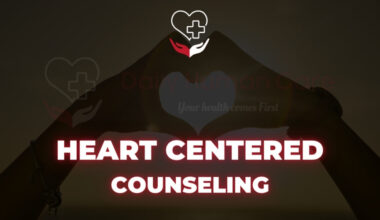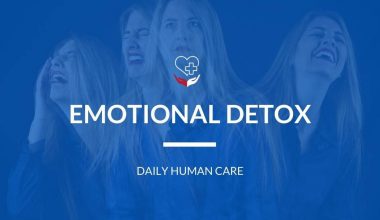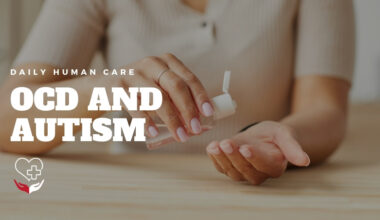This post is all about CP, Cerebral palsy. In this article, Daily Human Care will discuss all the preventive measures and trends of CP.
Cerebral means anything associated with the brain, and palsy means the inability to use muscles due to lack. Cerebral Palsy, CP is a group of disorders that affect the body’s motor functions, including muscle movement and posture. The damage most often occurs in the developing brain before birth.
Childbirth is an extremely complex process with many intricacies, and it is important to educate ourselves as much as possible, especially if you’re looking to raise a child. Newborns are vulnerable to infections and diseases during their development. One such critical condition is cerebral palsy.
When it comes to Cerebral Palsy (CP), there are four conditions you need to keep in mind.
⦁ Spastic Cerebral Palsy
⦁ Dyskinetic Cerebral Palsy
⦁ Ataxia Cerebral Palsy
⦁ Hypotonic Cerebral Palsy
Detecting cerebral palsy early stages is also important since it prevents the disorder from worsening. If you’re looking for more details on this, consider searching for a cerebral palsy guide to understanding causes, treatments, and precautions. The Cerebral Palsy Foundation (CPF) has stated that children are usually diagnosed 24 months after birth. Therefore, the period of early childhood is crucial.
Try to be on the lookout for these signs in newborns after birth:
⦁ Stiff legs when picked up.
⦁ Arched or overextended back and neck when picked up.
⦁ The difficulty of grasping objects with fingers.
⦁ Excessive drooling.
⦁ They cannot lift their head.
⦁ Delays in basic motor movements (crawling, sitting, etc.).

Stats
Among all mobility disorders in children, CP is the most common. Many organizations like ADDM (The Autism and Developmental Disabilities Monitoring) and SCPE (Surveillance of Cerebral Palsy in Europe) have maintained a statistical database for cerebral palsy and other childhood disabilities. They have highly specialized researchers working there who have gathered a lot of information regarding the statistics of cerebral palsy, which are summarized below:
⦁ Approximately 8000 to 10,000 babies are diagnosed with cerebral palsy every year.
⦁ Among all newborns, boys (3.6 per 1000) are more likely to develop cerebral palsy than girls (2.5 per 1000)
⦁ Currently, around 764,000 children and adults have cerebral palsy.
⦁ Out of every 1000 children, Cerebral Palsy occurs in 2.3 to 3.6 of them.
⦁ Among the types of cerebral palsy, Spastic Cerebral Palsy is the most common, comprising about 61% to 76.9% of all cases.
Cerebral Palsy, CP is more common in under-developed countries due to their lack of proper medical care. According to the CDC, the medical care of children with this disorder is ten times higher than that of children without it. This type of disorder stays with patients throughout their lives, so finding better care and proper accommodations for them is crucial and expensive.
Table of Contents
Prevention of Cerebral Palsy
Unfortunately, no available methods can completely prevent the onset of cerebral palsy. However, there are a lot of options that can help in minimizing the risk factors, and we have discussed them below.
1. Prevention During Pregnancy
- If a mother is expecting, there are some precautions that she can follow to prevent the baby from developing cerebral palsy, and they are as follows:
- Have regular checkups with your doctor for prenatal care; this allows them to keep a close eye on any complications and the general status of the fetus during the whole pregnancy.
- Avoid alcohol, smoking, drugs, or unhealthy eating or drinking habits – as the toxic substance can harm the baby.
- Ensure all underlying health issues, such as hypertension, diabetes, etc., are treated properly.
- Get vaccinated.
- Avoiding exposure to infections by washing hands regularly, taking care of personal hygiene, and notifying your doctor if you catch a cold or fever.
2. Prevention During Birth
A well-experienced and professional group of doctors is assigned to the delivery duties, so they closely monitor every aspect of mother and child conditions.
A fetal monitoring device is hooked to the baby, which allows them to see the baby’s heart rate or if they are in distress. Calmness during delivery is important because stress-induced trauma could harm the baby.
Communicate with your doctor about any discomfort you feel. Properly monitoring the baby’s and mother’s heart rate is crucial because failure to do so can result in any damage to the baby.
3. Prevention After Childbirth
After the child is born, three common things can cause CP in the child:
Jaundice:
Before leaving the hospital, doctors should check the baby for any signs of jaundice, including yellowing of skin and eyes, fever, etc.
Kernicterus:
It is a condition that happens if there is a failure in the early diagnosis of jaundice. In this disease, there is an increased bilirubin level in the bloodstream. A doctor should check the bilirubin levels of the baby before discharging them.
Head injury:
Parents must be extra careful with babies during their early childhood and prevent them from any injuries that can cause any trauma to their head. A child with a head injury is more susceptible to developing cerebral palsy. As a precaution, try not to leave the child unattended. Make them wear a helmet to protect their head. Do not let them sit on a higher seat, etc.
Preventing the scenarios mentioned above can effectively help reduce the chances of developing cerebral palsy in a child. All these preventive measures are just precautions because there is no cure for this disease. But they are still important because these pointers can help prevent any developmental disorder.
Final Thoughts
The main concern that plagues patients with cerebral palsy, CP is locomotion. The inability to move the muscles of their own free will, lack of muscle tone and posture, joint disability, etc. Therefore, the detailed assessment and evaluation of all these problems are important before moving on to treatment approaches. If you see any symptoms similar to the ones mentioned in this article in your newborn, consult your doctor so the condition can be treated in its early stages.




